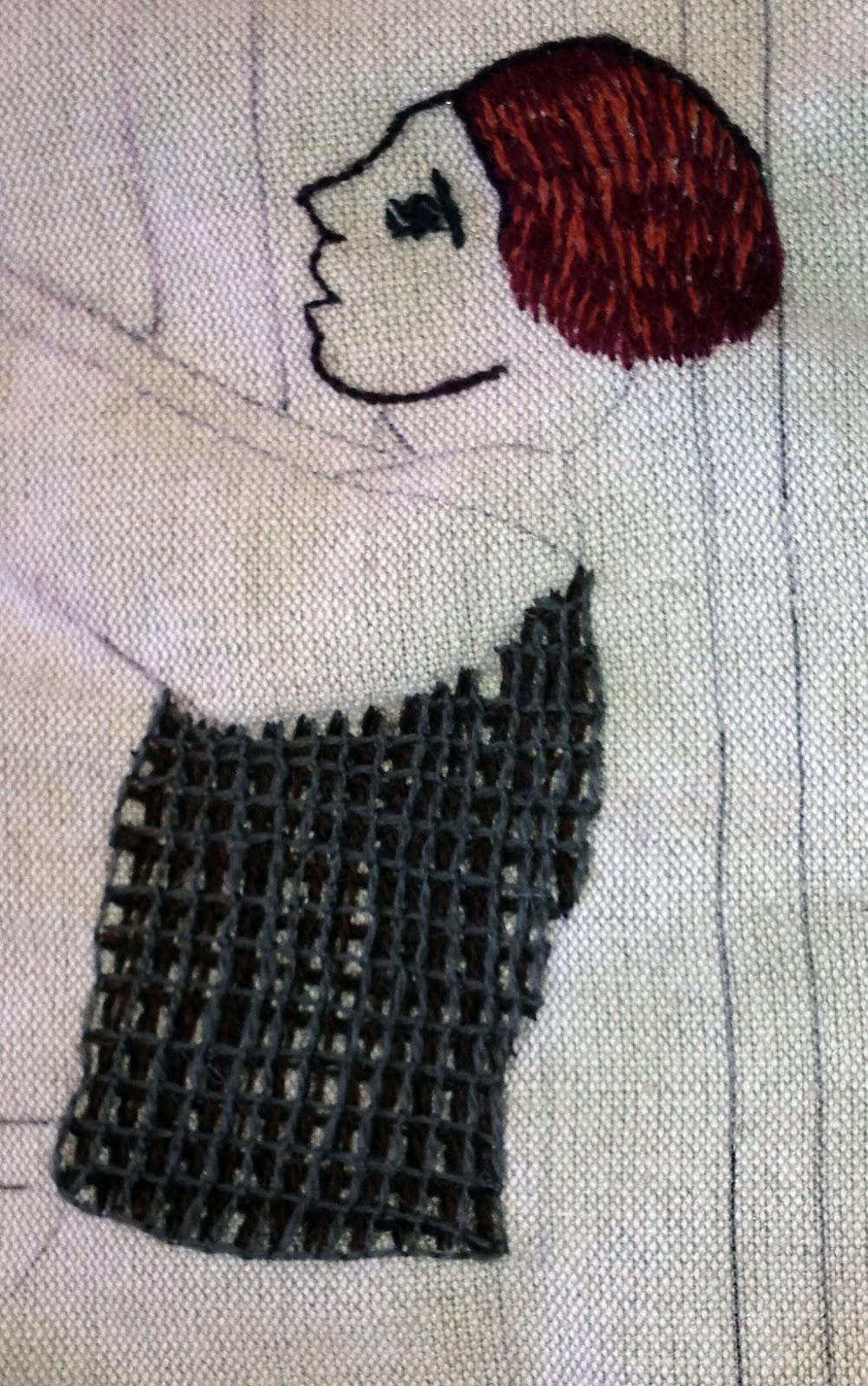 This entry should be called 'look closely' as the stitching done last week was worthy of sticking your nose close up and taking in the subtle details. Valerie had stitched Ruth the ministers daughters dress. She has stitched a harbour scene in greys and whites and from a distance it looks like the folds in the fabric but when you focus it becomes clear.
This entry should be called 'look closely' as the stitching done last week was worthy of sticking your nose close up and taking in the subtle details. Valerie had stitched Ruth the ministers daughters dress. She has stitched a harbour scene in greys and whites and from a distance it looks like the folds in the fabric but when you focus it becomes clear. Dorothy has completed the groups logo. She used chain stitch, back stitch, whipped stem stitch and the Wick stitch to show a herring in the letter C, a needle as the letter T and a satin stitch letter A to show Caithness Textile Artists. She also completed the hair on the ministers daughter Ruth and son James.
Dorothy has completed the groups logo. She used chain stitch, back stitch, whipped stem stitch and the Wick stitch to show a herring in the letter C, a needle as the letter T and a satin stitch letter A to show Caithness Textile Artists. She also completed the hair on the ministers daughter Ruth and son James.Ella has started the thatch roof of the long croft house. She has heavily researched the colours, the layout and the texture of thatch roofs and is using a long split stitch and a open stem stitch. This is in several colours as thatch has lighter top layers as the sun bleaches it.
In the panel the children are holding up peat to the teacher. Peat was the main fuel for Caithness as there are no coal mines or major woodland in the county and more expensive to be imported. Peat would be cut using a special tool and is hard back breaking work.
Catherine had in 2 rectangles of peat and told us that one was dry and hard and the other a bit damp and was called 'douwphy'. They would be broken up to put into the fire using the heel of a foot and then they became a clod.
She said that when her father cut the peats they would be laid flat on the bank. Then they when they were nearly dry they were lifted and put into a herring bone pattern on their edge and had to face the hill Morven which is in the south of the county. This would enable the wind to blow through the peats and dry it out ready for burning.
Ella said it was the same with the Stooks when they were cut and arranged in facing south to dry out.










